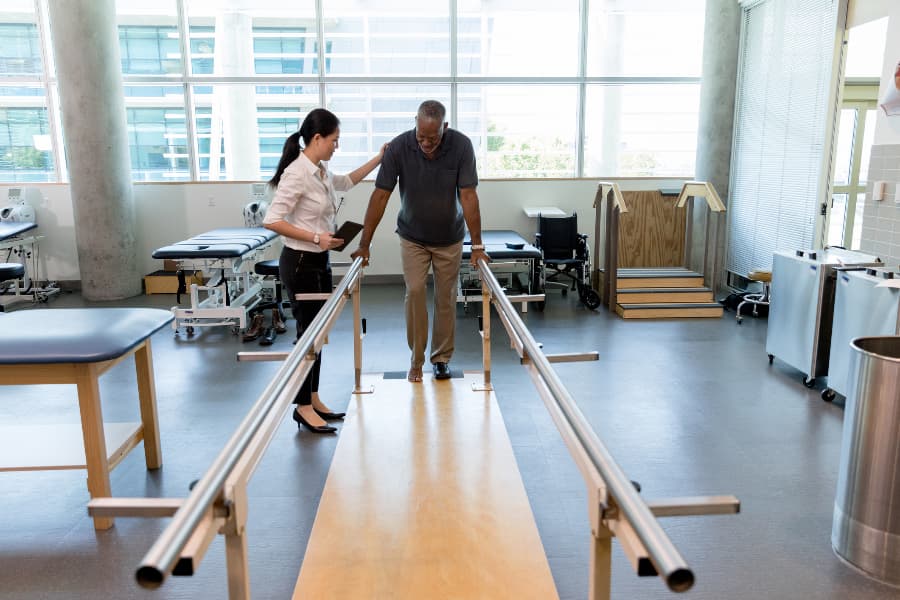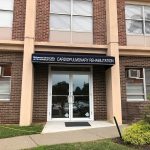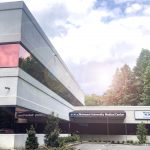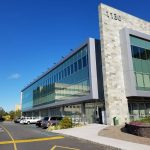Experiencing a stroke is a frightening and overwhelming experience. Not only is stroke a serious medical event by itself, but it may also result in long-term loss of mobility. At Richmond University Medical Center, we help stroke patients regain independence through physical therapy. Learn more about this treatment approach and the important role it plays in post-stroke care.
What Is a Stroke?
Blood flow is a vital part of brain function. Blood carries oxygen, water, and vital nutrients to fuel and hydrate the brain. A stroke occurs when this flow is cut off. Without a steady supply of blood, the brain no longer receives enough energy to keep up with its processes. Cells become starved and oxygen-deprived and eventually begin to die. This may result in brain damage.
There are two types of stroke. They are categorized by cause, which is crucial for helping physicians understand the problem and how to treat it:
- Ischemic: This type is caused by a blood vessel blockage, such as plaque or a clot. It is the most common type, accounting for 80% of strokes.
- Hemorrhagic: This type is caused by a blood vessel rupture, such as an aneurysm. The rupture results in bleeding into the brain, which may cause further damage.
Strokes can vary in severity. If the stroke is minor, is treated quickly, or is localized to a less crucial part of the brain, a person may only suffer temporary effects, or none at all. Major strokes, however, may result in serious brain damage and long-term disability.
The Consequences of Stroke
Nearly all patients experience some symptoms after surviving a stroke. These can vary depending on the severity of the stroke and which part of the brain was affected. However, five main areas are commonly affected:
- Mobility: Stroke survivors often face difficulties with mobility, including walking, standing upright, or swallowing. Severe strokes may also cause paralysis.
- Sensory: Stroke survivors sometimes experience changes in sensation, such as changes in vision or a reduced ability to sense pain, orientation, or temperature.
- Language: Stroke survivors may have difficulty using or understanding language or lose the ability to form words.
- Cognition: Stroke survivors sometimes experience reduced cognitive ability, such as memory issues or increased difficulty with complex thought and problem-solving.
- Emotion: Stroke survivors may lose emotional control or struggle to experience certain emotions. They may also feel depressed about other changes in ability.
The first few days after a stroke are often devoted to patient evaluation. The patient, their loved ones, and their care team need to understand the impact of the stroke and how it may change their daily lives.
What Is Stroke Rehabilitation?
Once the patient is stabilized and their condition is thoroughly evaluated, rehabilitation begins. Stroke rehabilitation is a form of post-stroke treatment that helps patients regain independence. Depending on the patient’s need, it may include relearning basic abilities, developing effective compensation strategies, and recovering emotionally. The ultimate goal is to regain as much function as possible and to improve the patient’s quality of life.
Because strokes have such diverse consequences, stroke rehabilitation requires a multidisciplinary approach. Patients work with a care team of multiple specialists, which may include:
- Doctors, such as neurologists and physiatrists
- Rehabilitation nurses and specialists
- Physical therapists
- Occupational therapists
- Speech-language pathologists
- Dietitians
- Social workers
- Psychologists and psychiatrists
Studies have shown that the sooner rehabilitation begins, the better the outcomes are. Most rehabilitation programs start within the first few days after a stroke.
The Importance of Stroke Physical Therapy
Physical therapy is a key part of stroke recovery. Though not all patients will experience the same symptoms, more than 40% have some trouble with movement. Stroke physical therapy is focused on addressing these issues. Licensed physical therapists work closely with patients to build strength and relearn motor functions. They use a variety of proven approaches, including:
- Treadmill training
- Walking or balance training
- Doing strength exercises using weights or bands
- Task-oriented training, where patients go through everyday motions
- Performing constraint therapy, where strong limbs are constrained to force weaker ones to work
- Undergoing aquatic therapy, or exercises in water
- Using virtual reality
Treatment typically starts with simple tasks, like picking up an object. It may progress to more complex tasks like standing up, walking, and other everyday movements. By doing so, patients gradually regain mobility, independence, and confidence in themselves.
Learn More About Stroke Physical Therapy
Physical therapy is an important aspect of stroke recovery. Richmond University Medical Center offers physical therapy for stroke patients at our state-of-the-art Comprehensive Rehabilitation Center in Staten Island, New York. Our experienced and compassionate rehabilitation experts work with patients to help them get back to independent living. To learn more about our stroke care services, contact us today.




